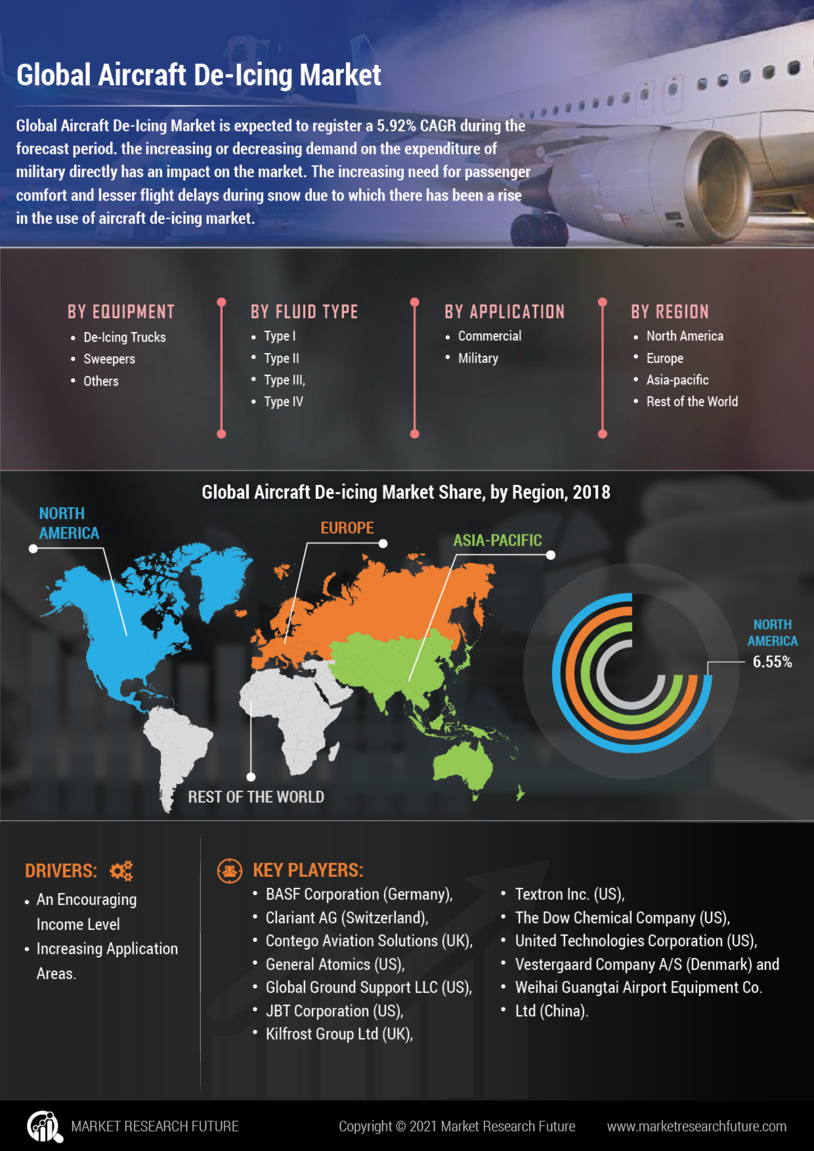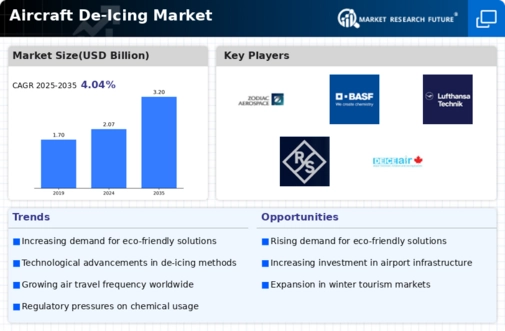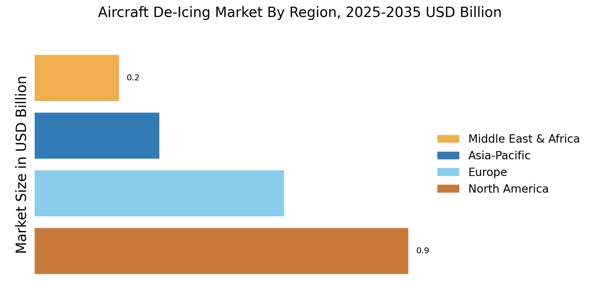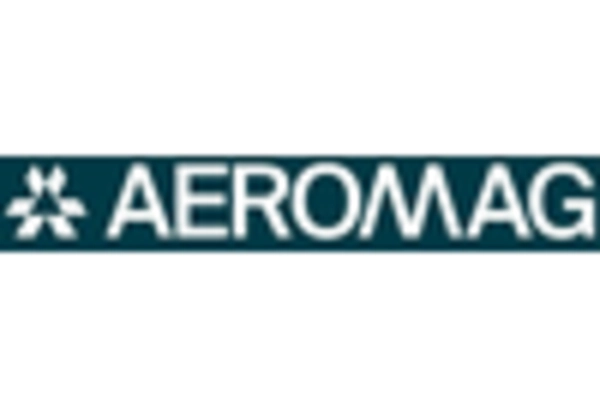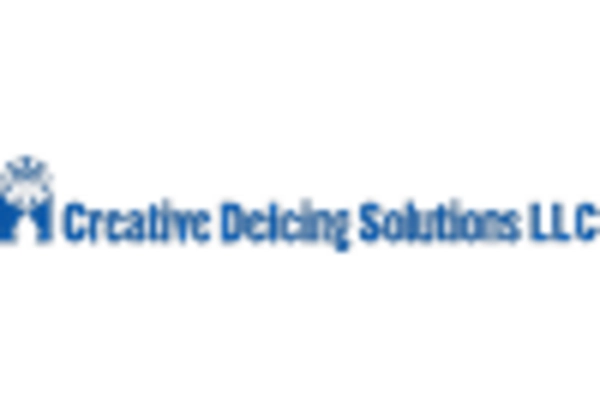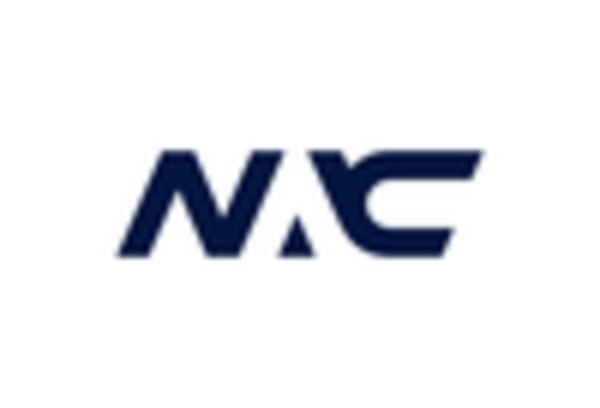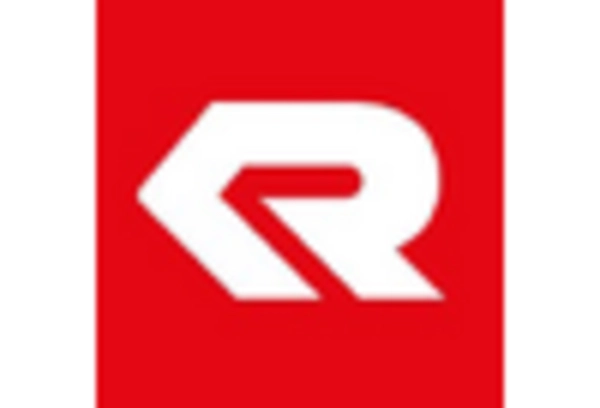Regulatory Standards
The aircraft de-icing Market is influenced by stringent regulatory standards aimed at ensuring safety and environmental protection. Governments and aviation authorities are implementing regulations that mandate the use of specific de-icing fluids and practices to minimize risks associated with ice accumulation on aircraft. Compliance with these regulations is essential for airlines to maintain operational licenses and avoid penalties. In 2025, the emphasis on regulatory compliance is expected to drive demand for certified de-icing products and services. This trend not only enhances safety but also encourages manufacturers within the Aircraft De-Icing Market to innovate and develop compliant solutions that meet evolving regulatory requirements.
Climate Change Impact
The Aircraft De-Icing Market is increasingly affected by climate change, which alters weather patterns and affects winter precipitation. As temperatures fluctuate, the frequency and intensity of winter storms may increase, leading to a higher demand for de-icing solutions. In 2025, regions that traditionally experienced mild winters may face unexpected snow and ice events, necessitating robust de-icing strategies. This unpredictability compels airlines and airports to invest in comprehensive de-icing plans to ensure safety and minimize disruptions. Consequently, the Aircraft De-Icing Market is likely to see a rise in demand for versatile de-icing products that can adapt to varying weather conditions, thereby enhancing operational resilience.
Increased Air Traffic
The Aircraft De-Icing Market is experiencing a notable surge in demand due to the increase in air traffic. As more airlines expand their fleets and routes, the need for efficient de-icing solutions becomes paramount. In 2025, the number of commercial flights is projected to reach unprecedented levels, necessitating effective de-icing strategies to ensure safety and operational efficiency. This trend is particularly evident in regions prone to winter weather, where de-icing is critical for maintaining flight schedules. The rise in air travel not only amplifies the demand for de-icing fluids and equipment but also drives innovation within the Aircraft De-Icing Market, as companies seek to develop faster and more effective solutions to meet the growing needs of airlines.
Technological Innovations
Technological advancements play a crucial role in shaping the Aircraft De-Icing Market. Innovations in de-icing equipment and materials are enhancing the efficiency and effectiveness of de-icing processes. For instance, the development of advanced heated de-icing systems and eco-friendly de-icing fluids is gaining traction. These innovations not only improve the speed of de-icing operations but also reduce environmental impact, aligning with the industry's sustainability goals. In 2025, the market is expected to witness a significant shift towards automated de-icing solutions, which could streamline operations and minimize labor costs. As airlines and airports invest in modernizing their de-icing capabilities, the Aircraft De-Icing Market is likely to benefit from increased adoption of these cutting-edge technologies.
Growing Focus on Sustainability
The Aircraft De-Icing Market is witnessing a growing focus on sustainability, driven by environmental concerns and regulatory pressures. Airlines are increasingly seeking eco-friendly de-icing solutions that minimize environmental impact while ensuring safety. In 2025, the market is expected to see a rise in the adoption of biodegradable de-icing fluids and practices that reduce waste and energy consumption. This shift not only aligns with global sustainability goals but also enhances the reputation of airlines committed to environmental stewardship. As the demand for sustainable solutions grows, the Aircraft De-Icing Market is likely to evolve, with manufacturers innovating to meet the needs of environmentally conscious customers.
